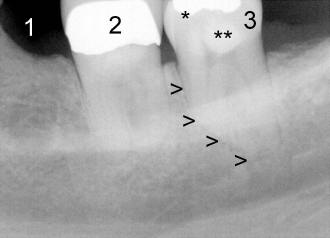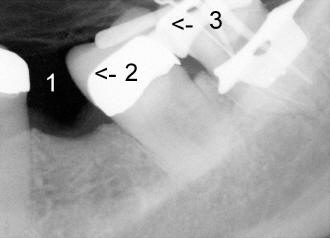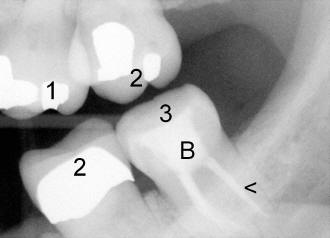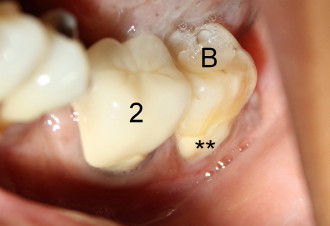



 |
 |
| Fig.1 | Fig.2 |
 |
 |
| Fig.3 | Fig.4 |
Dental Education Lecture: Savable Wisdom Tooth
Most of wisdom teeth are not worth saving, because they are trouble makers, but some of wisdom teeth are savable when they are straight and usable.
One day, Mrs. Ratna (in her forties) comes to my office for consultation for the pain in the lower left wisdom tooth. We have two choices for any pain-causing tooth: extraction and root canal.
X-ray (Fig.1) shows that the 1st molar (1) is missing (extracted in childhood), 2nd molar (2) has a crown and 3rd molar (3, i.e., wisdom tooth; pain maker) has two big fillings (*, **). One of the roots of the 3rd molar is quite curvy (arrowheads). The last two findings favor extraction.
Further exam demonstrates that the 2nd and 3rd molars have shifted forward toward the space of the 1st molar over years (arrows in Fig.2) so that the lower 3rd molar can actually bite with the 2nd molar on the top (Fig.3). In one word, the lower wisdom tooth is still useful. In spite of the fact that Mrs. Ratna has a lot of fillings (suggesting that she has bad history, being a candy-loving girl), her oral hygiene at present is almost pristine. She is willing to do so anything to save her teeth. She does not want to lose any more teeth. So we go ahead to save this wisdom tooth. Root canal is started (Fig.2) and finished (Fig.3 arrowhead). Build-up (B in Fig.3: a kind of filling) is done to close the opening for root canal. After build-up, the wisdom tooth looks pretty good (Fig.4), but we still need to place a crown, because the old filling (**, same as those shown in Fig.1) is not ideal and is probably the reason that the patient had nerve infection. The doctor needs to do everything to save this wisdom tooth. If you have any interest in seeing how we save the tooth by doing root canal, come here.
Xin Wei, DDS, PhD, MS 1st edition 06/01/2010, last revision 05/10/2011